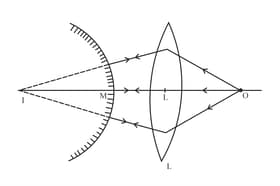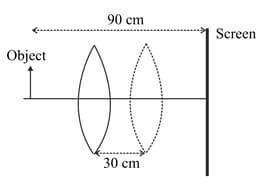Embibe Experts Solutions for Chapter: Ray Optics and Optical Instruments, Exercise 1: Goa Board-2018
Embibe Experts Physics Solutions for Exercise - Embibe Experts Solutions for Chapter: Ray Optics and Optical Instruments, Exercise 1: Goa Board-2018
Attempt the free practice questions on Chapter 9: Ray Optics and Optical Instruments, Exercise 1: Goa Board-2018 with hints and solutions to strengthen your understanding. EMBIBE CHAPTER WISE PREVIOUS YEAR PAPERS FOR PHYSICS solutions are prepared by Experienced Embibe Experts.
Questions from Embibe Experts Solutions for Chapter: Ray Optics and Optical Instruments, Exercise 1: Goa Board-2018 with Hints & Solutions
A beam of light passing from air into a transparent medium, suffers a deviation of at the interface, when incident at an angle of . The speed of light in the medium is
A point source is placed at a distance of from a converging lens of focal length , on its principal axis as shown in the figure. Find the distance at which a diverging mirror of focal length should be placed, so that a real image is formed on the source itself.

A screen is placed at a distance of from an object. A convex lens forms the image of this object on the screen, when placed at two different locations separated by as shown in the figure. Determine the focal length of the lens.

With the help of a neat ray diagram, derive the relationship between the focal length, the object distance and the image distance for a concave mirror. A concave mirror is first kept in a medium of refractive index and then in another medium of refractive index . What will be the change in its focal length?
A spherical surface of radius of curvature separates a rarer and a denser medium. With the help of a neat ray diagram obtain the relationship between the object distance , the image distance , the radius of curvature and the refractive indices and of the two media, when the object is kept in the rarer medium.
How does the scattering of light vary with the wavelength of different colours of light ?
The radius of curvature of either face of a convex lens is equal to its focal length. Calculate the refractive index of the material of the lens.
With the help of a diagram, obtain an expression for the refractive index of the material of the prism. If is the angle of incidence and the refracted ray inside the prism is parallel to the base, then what will be the angle of emergence ?
With the help of a diagram, obtain a relation between object distance, image distance and focal length of a concave mirror. If the concave mirror is immersed in water, will the above equation be still valid ?
